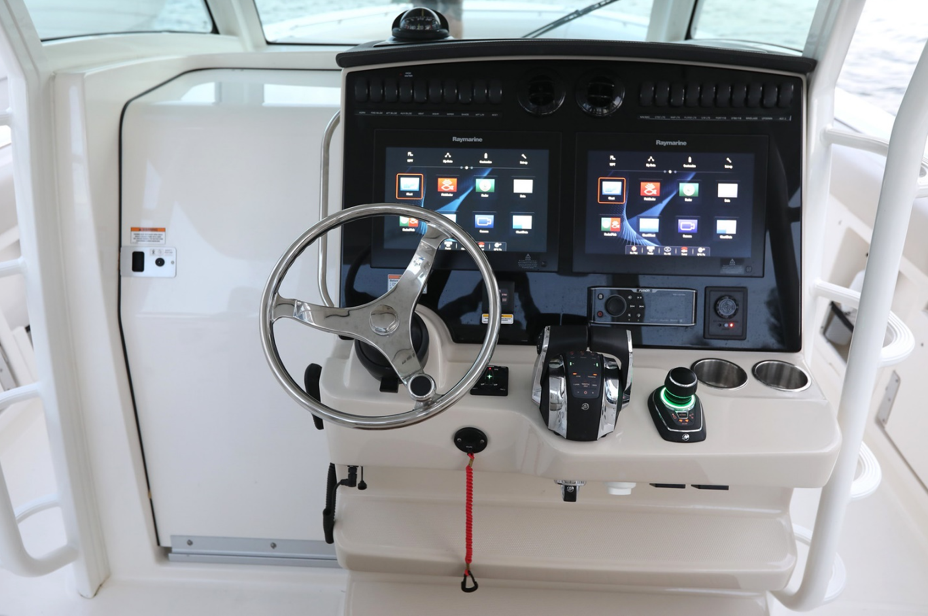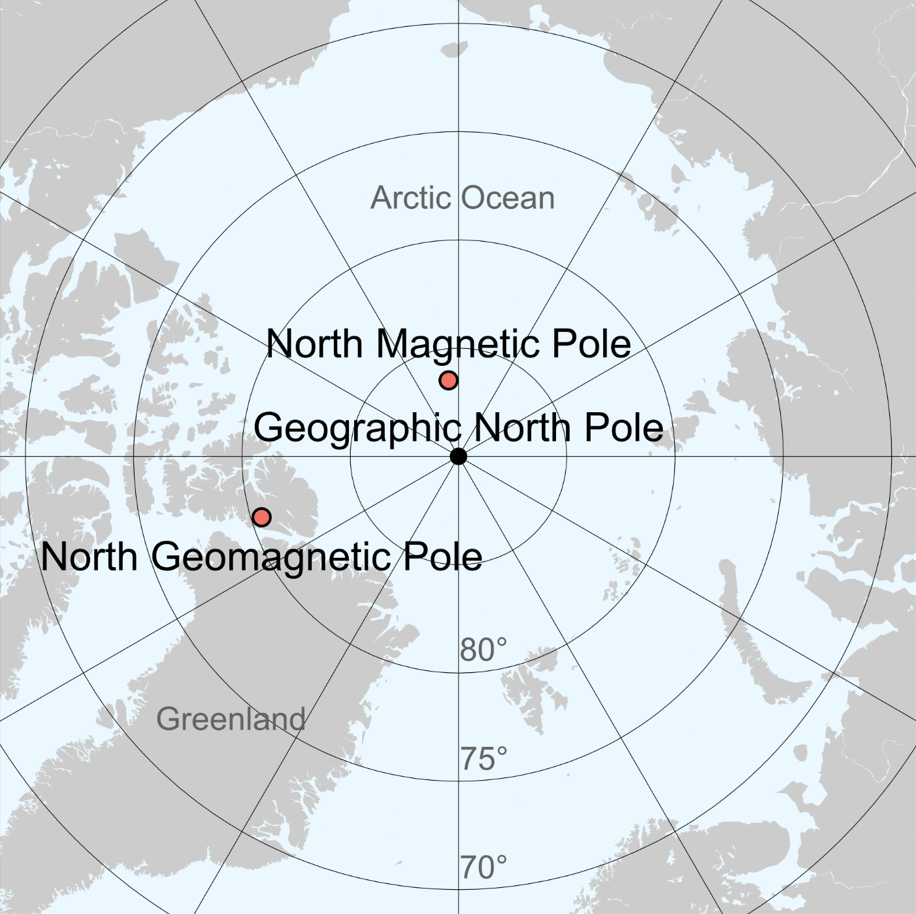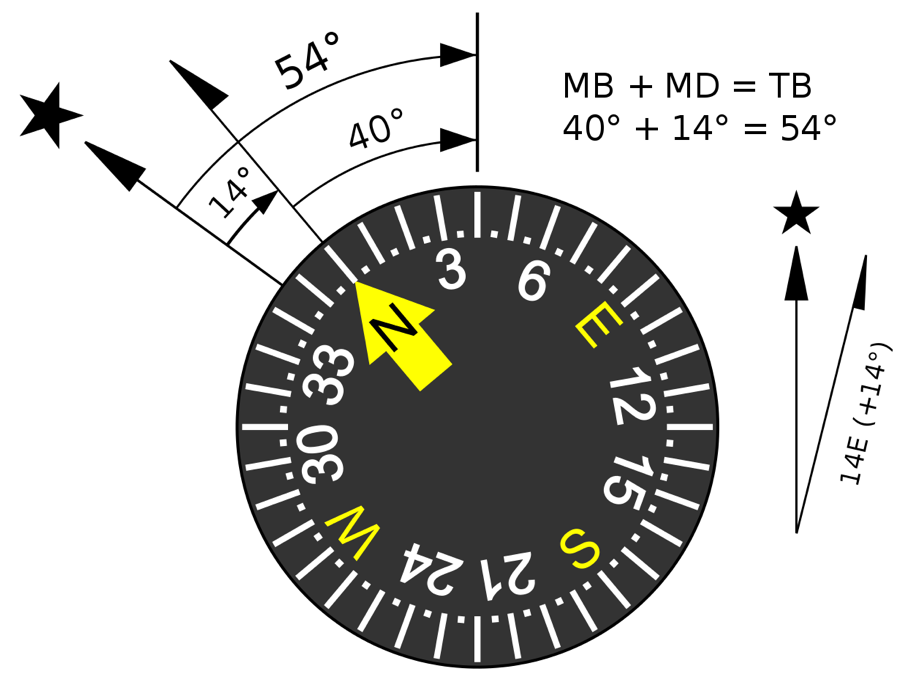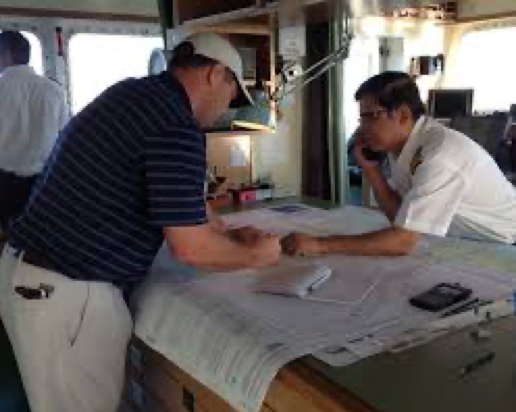Don’t Need a Compass? Think Again

By Vincent Pica, Commodore, United States Coast Guard First District, Southern Region (D1SR)
We’ve written about GPS, the wonder of the 21st (really 20th!) century, many times. It is truly one of the simplest yet most powerful aids to navigation ever invented. And it just keeps getting better and better. So, who needs a compass? You do. This column is all about that.
A Candle Held Where?

What if I told you that the signal from the GPS satellites reaches your boat with the intensity of a candle—held in Los Angeles while you are in New York?
Yes, that’s how it’s designed. So, what happens if the weather really becomes foul? You can lose your GPS signal, that’s what! It takes a lot because of the redundancies built-in but it can happen. I know it, first-hand.
And if you have to leave your boat due to emergency conditions, are you going to rip your GPS out of your dashboard and take it with you into the raft? No. As a matter of fact and of safety, right next to my compass, which sits above my in-dashboard GPS system, is a handheld, old-fashioned compass. If I leave that boat, the handheld compass comes with me.
Where is the Magnetic North Pole?

Most of us have seen diagrams or pictures of magnetic waves, just like those that come out of household magnets, coming out of the North and South Poles, encircling the Earth. The iron core of the Earth spins at high speed and creates this magnetic field. Of interest, the magnetic forces don’t emanate from the top of the world, i.e., the true North Pole.
Right now, the “Magnetic North Pole” is just north of Hudson Bay. When George Washington was leading the United States, Magnetic North was near Norway. If you look on any paper chart for the “compass rose,” it shows in the very center what is called “Variation”, i.e., from the area that the chart covers, what is the angular difference, i.e., variation, from True North to Magnetic North.
Here, it is 14-degrees west, i.e., your compass points 14-degrees too far west at Magnetic North versus where True North lies.
This means that when your compass is pointing to Magnetic North, you would turn the boat 14-degrees to the east (014-degrees) to be pointing to True North. This is interesting – but largely meaningless since all compasses sold above the equator point to Magnetic North. But it is important to be aware of Variation.
What is Deviation?

Frankly, more important than Variation to the average boater is Deviation. Deviation is the sum of all the forces within your boat that keeps your compass from pointing to Magnetic North. What? Case in point: a number of years ago, I was doing USCGAux vessel exams at a local marina when one skipper came up to me and asked me if I could look at his compass because it wasn’t working probably. Now fixing an errant compass is a relatively complicated process that requires specialized hardware.
I went with this skipper to see if I could at least isolate the problem. We stepped on his boat and, just before taking his seat at the helm, he removed his wallet from his hip pocket (which held his police badge within) and placed it next to his compass.
While he was fumbling with the boat keys, I watched his compass clock around and point at his wallet/police badge!
I asked him, “Skipper, why do you put your wallet there?” He said, “It kills my sacroiliac if I sit on my wallet!” I said, “Keep your eye on your compass while I move your wallet.” As I lifted it away from the compass, the compass clocked back and pointed to Magnetic North. “You fixed my compass!”
No, I simply removed a source of Deviation. Metallic objects (or magnetic objects like radio speakers) near your compass will “fool” your compass into thinking that object is Magnetic North.
Finding Compass Deviation

If you have a GPS, it will be easy — all you need is mile or so of calm water and you can run down the rhumb lines of the four cardinal points and record the differences between what the physical compass is reading from the GPS course you are running.
Deviation differs at a given compass course so you need to check at least the four cardinal courses (when we develop our deviation tables for new boats, we measure at least 16 compass headings.)
You need to know what your boat’s compass Deviation is so that, if you do have to use your compass in place of your GPS, you can compensate appropriately. Over enough distance, even a degree or two can add up to significant differences.
How to Find Deviation Without a GPS

If you don’t have a GPS, it is a bit more complicated, but it can be done. Get your paper charts out, mark a rhumb line between two points that lie at a given magnetic course between each other. Run down that line and record what your compass is reading versus what your paper chart told you the compass should be registering. The difference is Deviation.
GPS Fails and No Compass

Well, happily for this sorry skipper, there is a way to create a crude compass with a watch if you find yourself in such a state. Simply point the hour hand at the sun. Halfway between the hour hand (the sun) and 12 on your watch lies South. If you know where South is, you know where North, East and West are.
Don’t have an old-fashioned watch? Draw one and line it up as it were on your wrist. It works!